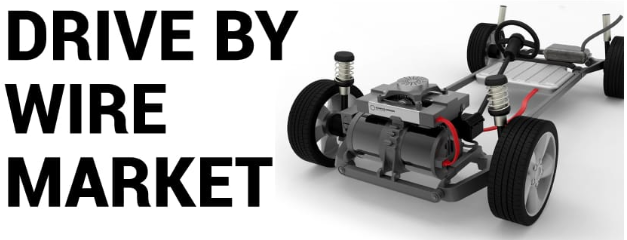What is Hybrid Learning?
Hybrid learning, also known as blended learning, is an educational approach that combines elements of traditional face-to-face instruction with online learning experiences. It integrates the benefits of both in-person and virtual learning to create a flexible and dynamic educational environment.
In hybrid learning, students engage in a mix of activities that can take place in a physical classroom setting and through digital platforms. This approach allows for a combination of synchronous (real-time) and asynchronous (self-paced) learning experiences. Students may attend in-person classes for certain periods, while also accessing online resources, participating in virtual discussions, and completing assignments outside of the classroom.
Hybrid learning offers several advantages, such as:
- Flexibility: Students have the flexibility to access learning materials and complete assignments at their own pace, accommodating different learning styles and schedules. They can also revisit and review course materials as needed.
- Personalization: Hybrid learning provides opportunities for personalized learning experiences. Educators can use online assessments and analytics to tailor instruction to individual student needs, providing targeted support and challenges.
- Enhanced engagement: By incorporating online resources, multimedia content, and interactive platforms, hybrid learning promotes active engagement and participation among students. It offers a variety of tools and formats to deliver content in an engaging manner.
- Collaboration and interaction: Hybrid learning fosters collaboration and interaction among students and teachers. Online discussion boards, virtual group projects, and real-time video conferencing enable students to collaborate, exchange ideas, and learn from one another.
- Technology integration: Hybrid learning encourages the effective use of technology tools and digital resources. Students gain valuable digital literacy skills and become familiar with digital platforms, preparing them for the technological demands of the modern world.
It is important to note that hybrid learning models can vary in their implementation. The specific combination of in-person and online components, as well as the extent of each, may differ depending on the educational institution, the subject matter, and the goals of the course.
Overall, hybrid learning provides a flexible and innovative approach to education, blending the best aspects of traditional instruction with the advantages of online learning. It aims to create a dynamic learning environment that enhances student engagement, promotes collaboration, and supports personalized learning experiences.
In recent years, hybrid learning has gained immense popularity as a flexible and effective approach to education. Combining the best aspects of traditional classroom instruction and online learning, hybrid learning offers a unique opportunity for teachers to engage students in diverse and interactive ways. This blog post will explore various hybrid learning strategies that can enhance teaching and learning outcomes, providing educators with valuable insights into creating an effective hybrid learning environment.
Blended Curriculum Design:
One of the key elements of hybrid learning is designing a blended curriculum that seamlessly integrates in-person and online activities. Educators can strategically combine face-to-face instruction with virtual resources, such as multimedia presentations, interactive quizzes, and discussion forums. By carefully planning the curriculum, teachers can optimize student engagement and promote active learning both in and out of the classroom.
Synchronous and Asynchronous Learning:
Hybrid learning offers the flexibility to incorporate both synchronous and asynchronous learning experiences. Synchronous learning involves real-time interactions between students and teachers, such as live video lectures or virtual discussions. Asynchronous learning, on the other hand, allows students to access pre-recorded lectures, participate in online forums, and complete assignments at their own pace. By balancing synchronous and asynchronous activities, teachers can cater to diverse learning styles and accommodate individual student needs.
Technology Integration:
Leveraging technology is essential for successful hybrid learning. Teachers can use various digital tools, learning management systems, and collaboration platforms to facilitate seamless communication and interaction between students and educators. These tools enable sharing of resources, submission of assignments, providing feedback, and fostering collaborative learning among students. It’s important for teachers to select and familiarize themselves with appropriate technology tools that align with their teaching goals and engage students effectively.
Personalized Learning Experiences:
Hybrid learning opens doors to personalized learning experiences, allowing educators to tailor instruction to meet individual student needs. By utilizing data from online assessments and learning analytics, teachers can identify areas where students may require additional support or challenges. This data-driven approach empowers educators to provide personalized feedback, suggest targeted resources, and adapt instructional strategies to optimize student learning outcomes.
Active Engagement and Collaboration:
Hybrid learning encourages active student engagement and collaboration through various activities. Teachers can incorporate group discussions, virtual breakout sessions, project-based learning, and collaborative assignments that foster critical thinking, problem-solving, and teamwork. Additionally, incorporating real-world applications and interactive simulations can deepen student understanding and make the learning experience more immersive and engaging.
Continuous Assessment and Feedback:
In a hybrid learning environment, regular assessment and timely feedback play a crucial role in guiding student progress. Teachers can employ a mix of online quizzes, formative assessments, and in-person evaluations to gauge student understanding and identify areas for improvement. Providing prompt feedback, both individually and collectively, helps students track their progress and make necessary adjustments to their learning strategies.
Conclusion:
Hybrid learning has revolutionized the teaching and learning landscape, offering a flexible and dynamic approach to education. By implementing effective hybrid learning strategies, educators can create engaging and interactive learning experiences that foster student success. By embracing blended curriculum design, leveraging technology, promoting active engagement and collaboration, and providing personalized feedback, teachers can unlock the full potential of hybrid learning, preparing students for the challenges of the modern world.


